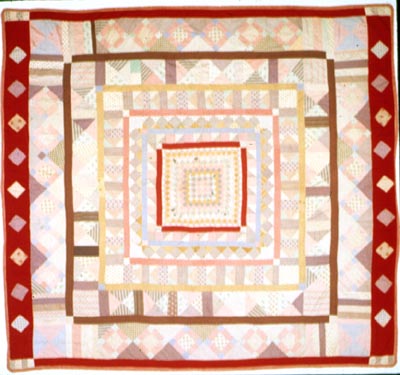Quilt No.960NGA - National Gallery of Australia
The quilt was made by Mary Ann Brunton. She began the quilt in 1873 at Sandhurst near Bendigo, Victoria. In 1990 the National Gallery of Australia purchased the quilt by auction at Sotheby's London. It is believed to have been in the possession of Mary Brunton's descendants until this time.
"Mary Ann Brunton (Australia born 1851-Australia died 1930) began making the quilt in 1873, when she was living at Sandhurst near Bendigo, Victoria. Mary Ann was a dressmaker and the fabrics in the centre of the quilt were saved from other jobs. The quilt was not finished until 1887 after she and her family of eight children moved to Swan Hill. This quilt is the only known one made by Mrs. Brunton, and she entered it into ten Agricultural Fairs in the Kerang district between 1888-1897 winning first place each time. The National Gallery of Australia has some of the prize certificates from these competitions." [NGA]
Related Quilts:
1500 x 1200mm
1580 x 1830mm
2439 x 1829mm
2415 x 2110mm
1740 x 1210mm.








